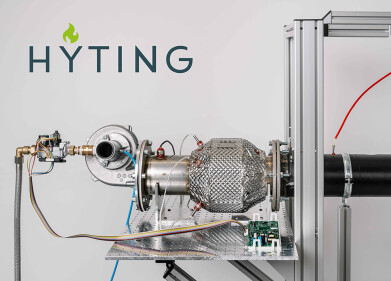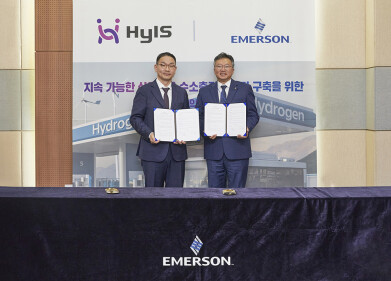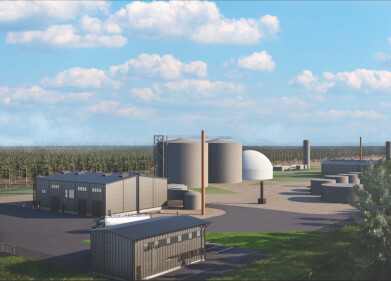Green Energy
Conveying beet pulp straight from the lagoon: robust, height-adjustable immersible pump makes biogas production easier
Feb 22 2017
Maize now has competition as the most important energy crop for German biogas plants: beets, particularly sugar beets and specially-bred energy beets, are becoming more and more popular. Firstly, they achieve a very high dry matter content, which is quickly transformed into gas thanks to high sugar content and secondly, they enable a greater diversity of crops and can therefore prevent crop rotation diseases and pest infestations. However, the storage of the beets in silos or silage tubes is sometimes complicated and expensive. Collecting beet pulp in foil-lined reservoirs represents a comparatively simple and cost-effective alternative to this. So as to be able to convey the substrate to the biogas plant from these lagoons, NETZSCH Pumpen & Systeme GmbH has developed an immersible pump, tailoring its materials for use with the abrasive pulp.
In a specific application, around 10m³ per hour of finely diced beet were to be transported to the fermenter. However, as a semi-solid oxidation layer forms on the pulp in the lagoon, the high-viscosity substrate must be drawn off underneath this layer of scum. For this application, a NEMO® BT immersible pump was therefore installed. These are also used elsewhere for emptying tough to high-viscosity media such as crude oil out of tanks and pits.
Progressing cavity technology provides high suction power
The system is based on the progressing cavity principle where a helix rotor rotates within a stator that has a correspondingly reversed helix. This means that chambers of the same shape are formed between the rotor and stator and these move the medium from the suction to the discharge side smoothly and without pulsation. In the process, the volume conveyed is directly proportional to the speed, which enables accurate dosing. Since the clearances between the two components are very tight and the geometries are precisely attuned to one another, the displacement pump can create a sufficiently large vacuum to enable suction in a vertical position. The special pump technology makes suction possible with any substance, just as long as this is free-flowing
On the other hand, the challenges were the low pH value of the sugar beet pulp and the high, abrasive sand content of up to 10% of the substrate volume. For this application, NETZSCH's developers therefore fitted a stator made of highly-resistant elastomer and a wear-resistant rotor. In addition, the pump is operated at an appropriate speed which increases its service life. Material wear could therefore be kept low in spite of high stresses.
NEMO® BT immersion pumps are generally suited to differential pressures of up to 24 bar and pumping capacities of up to 140m³/h, depending on the size. There are also various options for the materials, seals and rotor-stator geometry to adapt the conveying system to the medium and the required performance. The maximum immersion depth is 10m.
Events
Nov 26 2024 Paris, France
Nov 27 2024 Istanbul, Turkey
H2O Accadueo International Water Exhibition
Nov 27 2024 Bari, Italy
Biogas Convention & Trade Fair 2024
Nov 27 2024 Hanover, Germany
Dec 11 2024 Shanghai, China






-as-feedstock.jpg)








